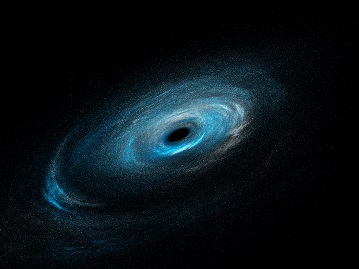A better view of the early universe

Related topics
Environment & climate action Innovation Funding Researchers Excellent Science Marie Skłodowska Curie actions United Kingdom Environmentdate: 06/10/2015
Project: Studying very high redshift Galaxies thr...
acronym: HIGHZLENS
See also: CORDIS
A glimpse of a particularly far-flung object is a glimpse back at the origins of the universe. “If we want to understand how our own galaxy has formed and evolved, we need to study the past of other galaxies,” says Johan Richard of the University of Lyon, France. He explores galaxies that take him back billions of years.
“Because their light has travelled very far, it’s very dim, and we need our biggest telescopes to detect it,” he explains. And he does mean “big”. His work makes use of the fact that massive galaxy clusters bend and magnify the light from distant objects behind them, boosting these ancient vistas.
This phenomenon is known as gravitational lensing. Combined with powerful man-made technology, it enables astronomers like Richard to study faint galaxies at the back of beyond. Only a few scores of such “natural telescopes” were known in 2008, when Richard took up a two-year postdoc position at the University of Durham, as part of a research group that went on to discover dozens more.
“In addition, we started to build up a sample of hundreds of galaxies which we then began to study in detail, zooming in and looking at their morphology and properties,” Richard reports.
Baby pictures…
Richard’s contribution to the Durham team’s collective effort took the shape of a project named Highzlens, an Intra-European Fellowship backed by the European Commission’s Marie Curie Actions as part of a wider programme supporting young researchers at the beginning of their career.
Dedicated to the study of very distant galaxies, Highzlens also encompassed the search for new natural telescopes and their calibration — the process of determining exactly how individual clusters affect the light from the objects behind them, as a reference for further research making use of this particular gravitational lens.
“It was a highly motivating fellowship that gave me a lot of independence for research and really boosted my career,” Richard reports. Further support from Marie Curie, this time in the form of a Career Reintegration Grant, later enabled him to secure a permanent position in his native France.
…of distant galaxies
Highzlens continues to inspire Richard’s ventures into deep, dark space, although it has recently been eclipsed by an actual MUSE: the Multi-Unit Spectroscopic Explorer instrument installed at the Very Large Telescope of the European Southern Observatory. Richard contributed to the development of this innovative 3D spectrograph, which is taking the study of distant galaxies to the next level.
“With the new instrument, you can look at a big chunk of time in one go,” he explains. “In a single shot, you can get hundreds of galaxies, which is very different to what we have been doing in the past.”
Richard’s latest project builds on this advance. Named Calends, this five-year endeavour launched in September 2013 is funded by the European Research Council and places him at the head of his own research group. The team uses natural telescopes as well as MUSE and other cutting-edge instruments to look deeper into space and time.
Read more
EU Marie Curie researcher discovers galaxy 13 billion light years away
